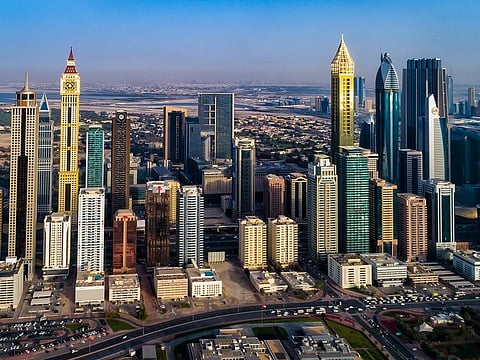Dubai awaits the next instantly popular residential community
Villa demand remains strong, but there is not enough being built to meet it

It’s always been said that Dubai’s property market is affordable because supply always outstrips demand. However, after the COVID-19 outbreak, this notion was quashed, as there was an acute shortage of supply, especially in family communities; which saw a dramatic increase in demand after the pandemic.
In the past, we’ve seen Dubai’s property market go through different cycles – with the market recovering from the 2008 setback and peaking in 2014, only to fall again over the next six years as master-developers launched large masterplan communities that flooded the market with supply. However, the market today has a newfound stability as a result of government initiatives, with Dubai’s ever-growing reputation of providing a lifestyle that is second to none and a lack of supply that meets the demand.
Like in the rest of the world, the pandemic has changed perceptions of Middle East homebuyers. People are keen to move from apartment clusters into bigger villa communities that offer large open spaces, lots of greenery and a sense of being in a city within a city. The pandemic has forced everyone to contemplate the significance of personal space, and there has been a marked shift to hybrid working models; prompting families to seek homes that have additional space and exclusivity.
Palm’s a dynamic of its own
This trend is particularly noticeable in super-prime communities such as Palm, where prices have grown by over 40 per cent. Whilst only accounting for a fraction over 2 per cent of the total number of villa sales across Dubai, the 90 villa transactions on the Palm accounted for almost 13.5 per cent of the Dh15.8 billion city-wide villa transactions during the second quarter of 2021.
This year could see as many as 78,000 new units launching in the market - according to advertised timeframes by developers. This would be the highest number of new homes entering the market since 2009, when 120,000 units were developed.
Design dates back to pre-Covid
However, many of these units were designed and planned pre-Covid, and thus do not meet the demands of buyers which have changed significantly post-pandemic. Our research demonstrates that 15 submarkets will be responsible for approximately 60 per cent of the total supply and what’s interesting to note though is that villas and townhouses are estimated to make up for only 20 per cent of the new stock, meaning actually we will continue to see a lack of supply driving up prices further.
Another key reason for the surge in prices is the uneven supply. For example, last year, a lot of units were delivered in areas such as Sports City, Business Bay and Jumeirah Village Circle, which does not quite meet the demand for apartments in Marina or for villas in family communities. However, with the recent announcement of Dubai’s population expansion over the coming years, we can expect a deluge of new developments hitting the market.
Waiting for next in-demand hub
It does remain to be seen whether these will meet the new buyer demand. A simple question is: Where is the next Dubai Hills?
Dubai’s real estate market is in its third cycle, however, this time around, few people are predicting a crash. The market looks set to continue its healthy growth, driven by several factors that are not tied to the finance sector. Instead, the market is driven by strategic visa reforms and liberal social laws, historically low interest/mortgage rates, and an overall feel-good sentiment around the city.
We haven’t quite reached the peak of 2014, so there remains room for growth. And what is clear is that the supply that is coming online was planned pre-Covid and does not necessarily match the changing demands of buyers, meaning that prices will continue to grow.
The writer is Partner – Head of Prime Residential at Knight Frank Middle East.

Sign up for the Daily Briefing
Get the latest news and updates straight to your inbox


